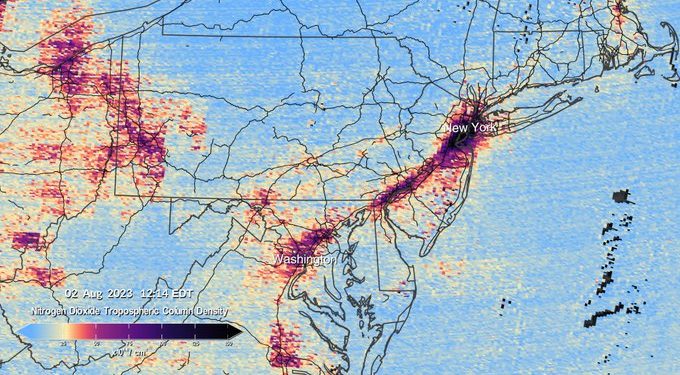Washington: US space agency NASA has released the first data maps from its new pollution-monitoring instrument, launched to space earlier this year.
From its orbit 22,000 miles above the equator, NASA’s TEMPO, or Tropospheric Emissions: Monitoring of Pollution, is the first space-based instrument designed to continuously measure air quality above North America with the resolution of a few square miles.
Launched in April aboard a Maxar Intelsat 40e satellite on a SpaceX Falcon 9 rocket, TEMPO makes hourly daytime scans of the lower atmosphere over North America from the Atlantic Ocean to Pacific coast and from roughly Mexico City to central Canada.
TEMPO, the first space-based instrument to continuously monitor North American air quality with the resolution of a few square miles, released its first maps: https://t.co/qJoWiM128F
TEMPO studies the effects of traffic, fertilizer, and fire to the neighborhood level. pic.twitter.com/97qUjHccUg
— NASA (@NASA) August 24, 2023
The primary instrument is an advanced spectrometer that detects pollution normally hidden within reflected sunlight.
The first pollution maps show concentrations of nitrogen dioxide gas from pollution around cities and major transportation arteries of North America.
The data were gathered during TEMPO’s “first light” period from July 31 to August 2, when mission controllers opened the spectrometer to look at the Sun and Earth and start a variety of tests and solar calibrations.
“TEMPO is beginning to measure hourly daytime air pollution over greater North America,” said Kelly Chance, SAO senior physicist and TEMPO principal investigator, in a statement.
“It measures ozone, nitrogen dioxide, formaldehyde, aerosols, water vapour, and several trace gases. There are already almost 50 science studies being planned that are based around this new way to collect data,” Chance added.
Observations by TEMPO will significantly improve studies of pollution caused by rush-hour traffic, the movement of smoke and ash from forest fires and volcanoes, and the effects of fertiliser application on farmland.
In addition, TEMPO data will help scientists evaluate the health impacts of pollutants and aid in the creation of air pollution maps at the neighbourhood scale, improving understanding of disparities in air quality within a community.
The TEMPO instrument was built by Ball Aerospace and integrated with the Maxar-built Intelsat 40e.
The instrument will begin full operations in October, collecting hourly daytime scans, the first instrument to observe pollution over North America in this way.
TEMPO is part of NASA’s Earth Venture Instrument programme, which includes small, targeted science investigations designed to complement NASA’s larger research missions.
The instrument also forms part of a virtual constellation of air pollution monitors for the Northern Hemisphere which also includes South Korea’s Geostationary Environment Monitoring Spectrometer and ESA’s (European Space Agency) Sentinel-4 satellite.







































